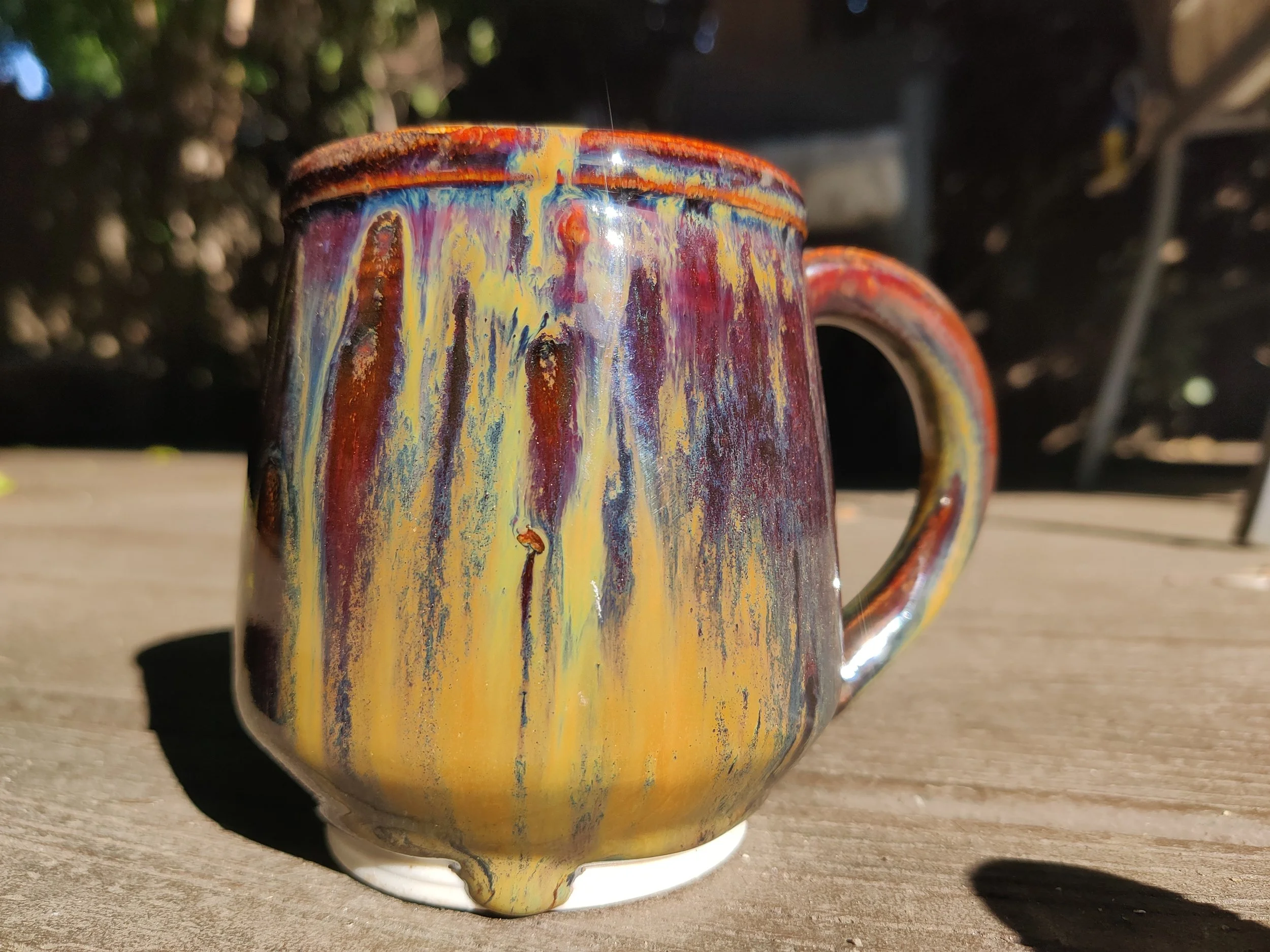Why specific gravity is so important to your glaze. Example.
I know I sound like a broken record as I am constantly telling anyone who makes glaze to weight their specific gravity (The ratio of the density of a substance vs the standard) for your glazes. The real definition is a bit of a word salad but it is really just measuring the density of your materials within / vs the water (because that’s what glaze is, minerals floating in water). That is to say the best glaze recipes have an amount of water, specific gravity, and viscosity numbers for the most consistent results. With this in mind let’s talk about one of my more sensitive glaze recipes to use, especially for people who do not tune their specific gravity (S.G).
This is Donte’s Greymon. A cone 6 oxidation phase separation glaze.
This glaze is sensitive in that it gets much better color when held at 1800f for 30 min or so and must be a thick application at 1.4 S.G (specific gravity)or around that number.
As long as you do the slow cool and use the right S.G it'll work.
p.s Do not go below 1.3 S.G if you try this glaze
Here is the problem. Most new people who come across recipes mix them with a random amount of water and what people call “the finger test”. They make a glaze and dip their finger in the glaze to see if they can see their hand texture through the glaze. If so it’s thick enough for them.
This is Thinking……. A trash way to measure S.G a and viscosity .'; it will only get you so far. If you use S.G and treat the glaze correctly you can get great consistent results from glazes that others swear don't work. Glaze recipes in books you have tried before will have a higher percentage of working and life becomes easier.
Here. Let me show you.
Greymon on frost porcelain cone 6 ox
Greymon on IMCO porcelain cone 6 (hot) ox
Greymon on a b-mix test tile cone 6 ox.
Greymon on IMCO porcelain cone 6 ox
Now let me show you when it looks like when you do not weigh your water or have a S.G number assigned to a glaze.
Donte’s Greymon at 1.3 specific gravity, 3 second dip.
This is trash. And it’s only 0.1 off from the density I prefer to use this glaze at. This was fired at cone 6 with no hold.
Now let’s take some water out of the glaze.
This is the same clay as above (frost porcelain). Same kiln load. Fired right next to each other. Dipped for 3 seconds.
I treated this tile the same as the one above, the only difference is that I took some water out so that the density of the materials that make the glaze increased in comparison to the amount of water.
The only difference is that this tile is 1.4 specific gravity.
Less water in the glaze.
In releasing this glaze I would have met a few people that would claim that no matter what they did they would only get brown with little to no phase separation. So I would investigate. Even going as far as watching people make the glaze. Almost every single time they do not weigh the water or even sieve the glaze. Most of the time they are just shaking minerals in a jar and doing the finger test. After testing they will often claim most of the glaze recipes in books are trash.. No my brother… it is not the glaze that is trash. The density of your minerals vs the water is important to the consistency of your glaze. Learn to weigh it.
P.S At the moment of writing, the CMW has a theory that thicker applications have the same effect as if you were firing hotter. I assume this means higher specific gravity = higher density application of he minerals when applied under the same amount o seconds. This might be the key to making this recipe work.







